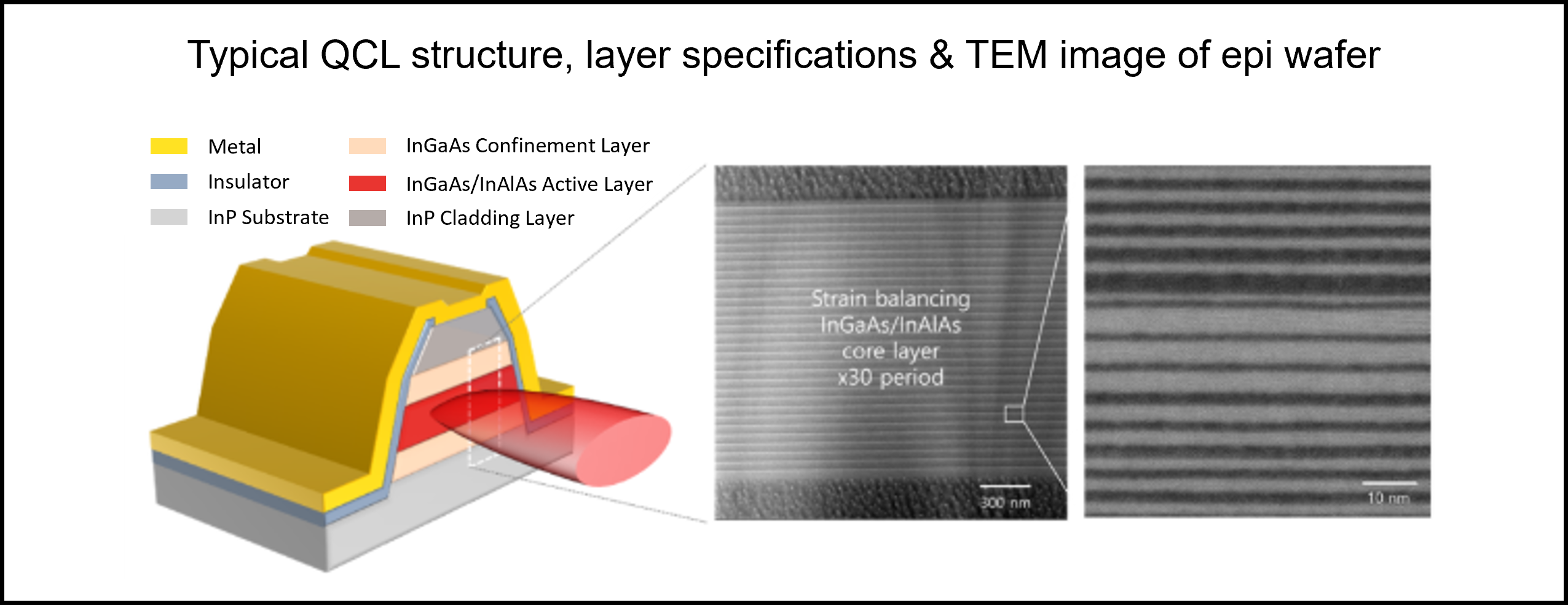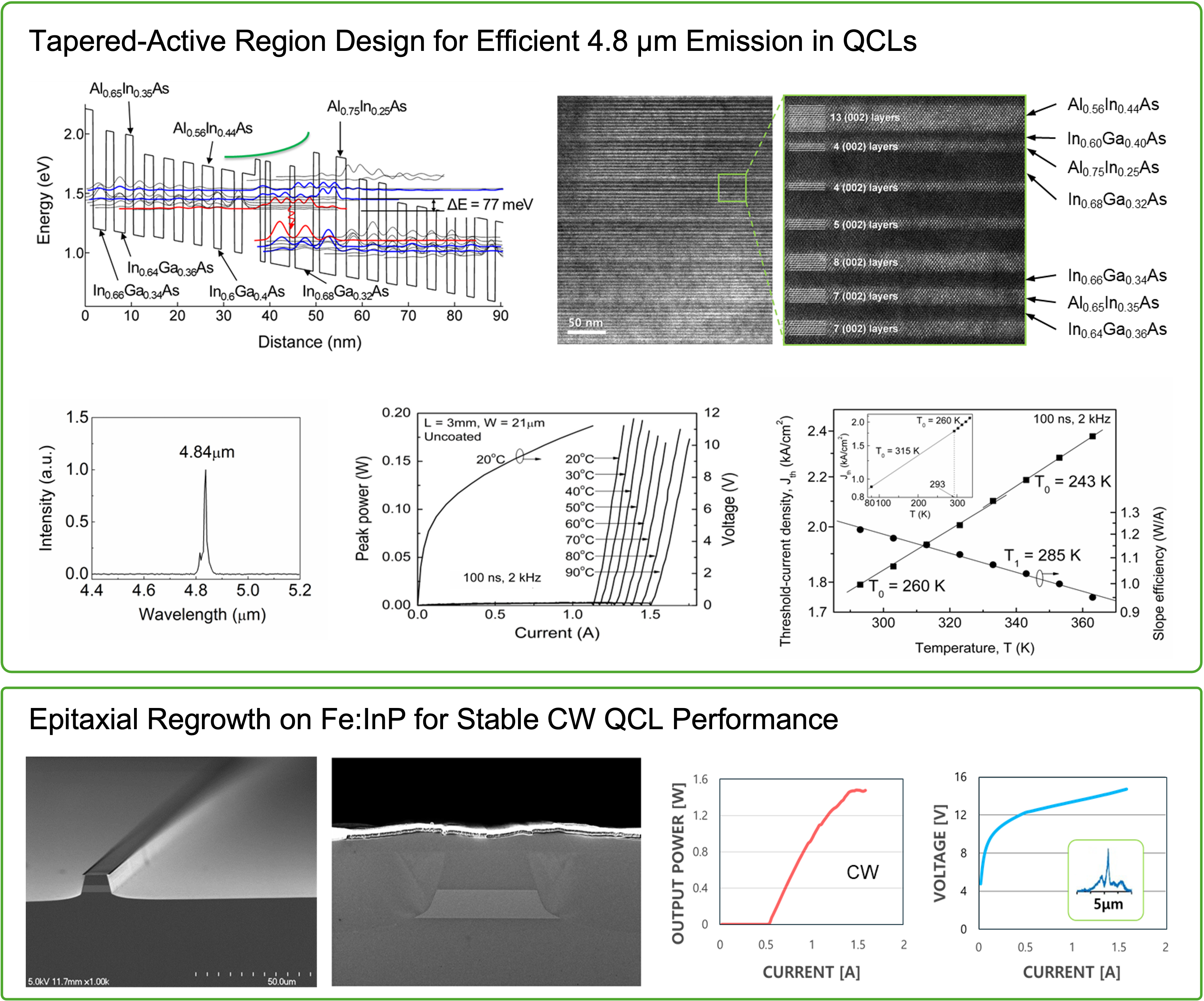2024.12.10 | EPI Solution
Our InP-based Quantum Cascade Laser (QCL) epi wafer is precisely engineered for high-power, mid-infrared laser applications in industrial sensing, environmental monitoring, and defense systems. Grown by Metal-Organic Chemical Vapor Deposition (MOCVD), the epitaxial layers exhibit excellent material uniformity and precise thickness control on 2-inch wafers.

Our advanced QCL structures incorporate a multi-stage active core and injector region, optimized for efficient intersubband transitions. These layers are carefully lattice-matched or strain-compensated to InP substrates, which minimizes defect density and suppresses strain-related degradation, leading to superior optical and thermal performance.
EpiSolution offers deep technical experience in the growth and regrowth of QCL structures, including buried heterojunction regrowth using Fe-doped InP. Our proven track record enables us to provide tailored support to customers developing mid- to far-infrared QCLs—from custom structure design and epitaxy to device performance optimization. Whether you're developing early prototypes or scaling up production, we ensure high performance and yield.

Our expertise is grounded in peer-reviewed research, including:
1. J. C. Shin et al., “Highly temperature insensitive, deep-well 4.8 μm emitting quantum cascade semiconductor lasers”, Appl. Phys. Lett. 94, 201103 (2009)
https://doi.org/10.1063/1.3139069
2. J. C. Shin et al., “Ultra-low temperature sensitive deep-well quantum cascade lasers (λ=4.8 µm) via uptapering conduction band edge of injector regions”, Electron. Lett. 45, 741–743 (2009)
https://doi.org/10.1049/el.2009.1393
3. J. C. Shin et al., “Characteristics of mid-IR-emitting deep-well quantum cascade lasers grown by MOCVD”, J. Cryst. Growth 312, 1379–1382 (2010)
https://doi.org/10.1016/j.jcrysgro.2009.09.034
4. J. C. Shin et al., “Crystal growth via metal–organic vapor phase epitaxy of quantum-cascade-laser structures composed of multiple alloy compositions”, J. Cryst. Growth 357, 15–19 (2012)
https://doi.org/10.1016/j.jcrysgro.2012.07.013
5. Dan Botez et al., “High internal differential efficiency, mid-infrared quantum cascade lasers”, Proc. SPIE 10123, 101230Q (2017)
https://doi.org/10.1117/12.2249537